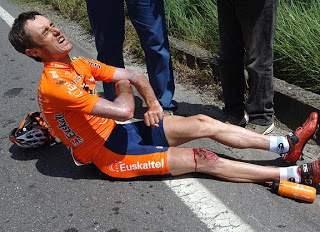This week I’m bringing you a general fitness related guest post from Alex which has some good advice for all of us.
Alex is an enthusiastic blogger and cyclist. He often takes the time out of his busy life to take part in cardio cycling sessions and has seen his health and fitness improve hugely.
I hope you enjoy it! – Matt.
Have you been amazed by the cost of gym memberships? They have spiraled out of control! The average gym now charges members £50 per month, with premium gyms bumping the cost up to a ridiculously high £100. Even for those that can afford the monthly fee, the worry is that with work and their personal life, they won’t be able to get value for money.
If you are considering doing cardio on a regular basis, then joining a gym is not necessary. Cycling is one of the best ways to improve cardiovascular endurance. In fact, getting outdoors and avoiding the gym is a lot healthier and going to be much more fun than sitting in a gym. Here is the great thing about cardio routines; you can choose exactly how you work out! Whether you are someone worried about their long term health, or someone who just wants to improve their fitness ready for an upcoming sporting event, you can tailor a routine around your every single need.
Here are some of the main benefits of cardio exercise which should push you into developing a routine that suits you:
Helps to decrease heart rate
Decreases blood pressure
Burns calories easily
Reduces body fat
Balances cholesterol
Improves breathing
The Routine
Each cardio routine should incorporate periods where you work hard and periods where you rest. Athletes tend to emphasize these periods to create an intense workout.
During rest periods, you are likely to be operating at around 50-65% of what you were working at before. The idea behind alternating is to allow your body to adjust to different output levels, but also to gain stamina at the same time. For instance, you might choose for the main work period to be a 150 metre climb on the hill that you can see in the distance!
How Long Should A Cardio Routine Be?
When you first begin your cardio routines 15-20 minutes is going to be more than enough. As you increase your cardiovascular endurance, you can change certain variables. Some people prefer to do an intense cardio routine. They will increase the time that they workout, rather than the intensity, until they get to the 30 minute mark. At this point, when they feel that they are executing the routine perfectly, they will increase the intensity. For instance, they reduce the amount of rest periods and work harder during the working periods.
Others that are not so competitive and just want to increase their endurance and health prefer to do long and slow workouts. When they are comfortable at the 15-20 minute mark, they increase their workout by 5-10 minutes. Although the focus is on consistently increasing the time they work out, generally, they are going to have to increase the intensity at some point. Otherwise they are going to be working out for hours on end, which won’t fit in nicely with their busy work/personal life.
What You Will Need to Get Started
Bike
Choose your weapon of choice. A lot of people go for racers or “road bikes”. That being said, if you find long road rides boring, why not consider a mountain bike instead. There are plenty of great bikes available from retail stores up and down the country from around £200.
Bike Insurance
Unfortunately, we live in a world where our possessions are not safe. If you train for 1-2 hours, it is likely you might have to take a break and your bike is at risk. Consider getting cycle insurance quotes from Velosure in case there are any problems.
Gear
Although you don’t need to buy every item under the sun, some items will make your life a little more comfortable. Breathable clothing, padded clothing for mountain bike riders, riding shoes for road riders and water bottles will all help to make this a much more comfortable and enjoyable experience.




